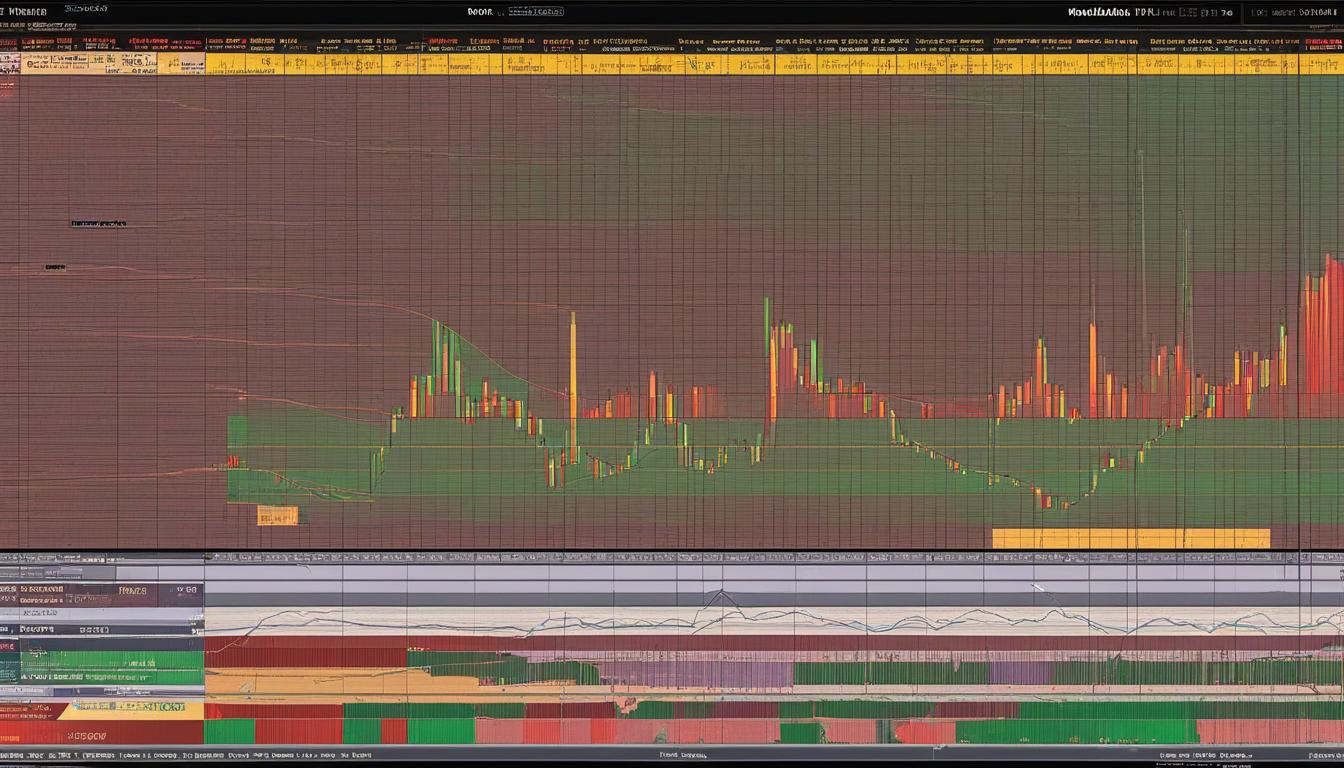Sector-Specific Options Trading: Opportunities in Tech, Healthcare, and Energy

Introduction
Sector-specific options trading has become a popular strategy for investors looking to maximize their profits. By focusing on specific industries, you can take advantage of the unique market trends and dynamics that affect these sectors. This targeted approach allows you to make better decisions and create customized strategies based on the movements of each industry.
In this article, we will explore the potential opportunities in the tech, healthcare, and energy sectors through sector-specific options trading. You will learn about:
- The main factors influencing each sector
- Trading techniques designed for each industry
- Real-life examples to help you grasp the concepts better
By the end of this article, you will have practical knowledge to navigate and profit from these promising sectors.
Sector-Specific Options Trading vs. General Options Trading
Tech Sector Opportunities
The tech sector is a great choice for options trading because of its potential for high growth and dynamic market trends. When you focus on trading within the tech industry, you can make the most of rapid advancements and innovations.
Why Tech Sector is Attractive for Options Traders
Here are some reasons why options traders find the tech sector attractive:
- High Growth Potential: Tech companies are often leaders in innovation, which can result in significant stock price movements.
- Volatility: The fast-paced nature of technological advancements can lead to increased volatility, which is beneficial for certain options strategies.
- Market Trends: The sector is heavily influenced by emerging trends such as artificial intelligence (AI), machine learning (ML), cloud computing, and cybersecurity.
Key Trends in the Tech Industry
There are several key trends that are driving the tech industry forward:
- Artificial Intelligence and Machine Learning (AI/ML): AI and ML are transforming various industries, creating new opportunities for tech companies. For example, companies like NVIDIA (NVDA) have seen substantial stock price increases due to their involvement in AI technologies.
- Cloud Computing: With businesses increasingly moving their operations to the cloud, companies like Amazon Web Services (AWS) and Microsoft Azure are experiencing rapid growth. This trend can be leveraged through bullish options strategies.
- Cybersecurity: As cyber threats become more sophisticated, demand for robust cybersecurity solutions grows. Companies like CrowdStrike (CRWD) and Palo Alto Networks (PANW) are key players in this space.

Trading Strategies in Tech
Options traders can use different strategies to benefit from the unique characteristics of the tech sector:
- Bullish Strategies:
- Call Options: Buying call options on high-growth tech stocks like Apple (AAPL) or Tesla (TSLA) can lead to significant returns if the stock prices rise.
- Bull Call Spreads: This strategy involves buying a call option at a lower strike price while selling another call option at a higher strike price. It limits risk while still allowing for potential gains.
- Bearish Strategies:
- Put Options: Purchasing put options on overvalued tech stocks or those facing regulatory scrutiny can result in profits if the stock prices decline.
- Bear Put Spreads: Similar to bull call spreads, this involves buying a put option at a higher strike price and selling another put option at a lower strike price.
- Volatility Strategies:
- Straddles: Investors can buy both a call and put option at the same strike price, benefiting from significant price movements in either direction.
- Strangles: This involves buying out-of-the-money call and put options, providing profits from substantial price swings without needing to predict the direction.
Industry-focused trading in the tech sector offers numerous opportunities driven by market trends and high growth potential. By understanding these dynamics, you can devise effective options strategies tailored to take advantage of this ever-evolving space.
Trading Strategies in the Tech Sector
In the tech sector, industry-focused trading strategies can leverage market trends and high growth potential. Here are some specific approaches:
Bullish Strategies
- Call Options: Buying call options on tech stocks like Apple (AAPL) or Microsoft (MSFT) allows you to capitalize on anticipated price increases. For instance, if you expect strong earnings from a company due to advancements in AI/ML, purchasing call options can be profitable.
- Bull Call Spreads: Reduce costs and mitigate risk by buying a call option at a lower strike price while selling another at a higher strike price. This strategy can be effective when you forecast moderate gains in tech stock prices.
Bearish Strategies
- Put Options: If you predict a decline in a tech stock, buying put options provides downside protection. For example, during regulatory crackdowns on big tech firms, put options offer a way to hedge against potential losses.
- Bear Put Spreads: Similar to bull call spreads but for bearish outlooks, this involves buying a put option at a higher strike price and selling another at a lower strike price. This strategy limits potential losses while allowing for gains if the stock’s price decreases.
Volatility Strategies
- Straddles: In times of high volatility, such as product launches or earnings reports, straddles can be beneficial. This involves buying both a call and put option at the same strike price. Profit occurs as long as the stock makes significant moves, regardless of direction.
- Strangles: A variation of straddles but with different strike prices for the call and put options. This approach is useful when you expect large movements in tech stocks but are uncertain about the direction.
These strategies highlight the unique advantages of sector-specific options trading compared to more general approaches by focusing on tech industry trends and market dynamics.
Opportunities in the Healthcare Sector
The healthcare sector is a strong area of the market that appeals to options traders looking for stability. It has shown resilience during economic downturns, making it a safe haven against market volatility. Unlike other industries that are heavily influenced by economic cycles, healthcare stocks are less affected, offering investors a sense of security during uncertain times.
Here are some key trends in the healthcare industry that present various trading opportunities:
1. Biotech Advancements
Breakthroughs in biotechnology are driving significant growth in the healthcare sector. Companies involved in genetic research, drug development, and medical devices are at the forefront of this progress. Options traders can take advantage of these advancements by focusing on biotech firms with promising pipelines and FDA approvals. The recently published report by the White House on harnessing research and development further emphasizes the potential in this field.
2. Aging Population
The global population is getting older, leading to an increased demand for healthcare services and products. This demographic shift provides a favorable environment for sustained growth in the healthcare sector. Options strategies can benefit from companies specializing in elder care, pharmaceuticals, and age-related treatments. A comprehensive global trends report by the National Intelligence Council highlights the significance of this demographic shift and its impact on various sectors including healthcare.
3. Telemedicine Expansion
The COVID-19 pandemic has accelerated the adoption of telemedicine services. As more people seek remote healthcare options, companies offering telemedicine solutions are experiencing significant growth potential. Traders can explore opportunities with firms that are innovating in this space for profitable options trades. The European Parliament has recognized the importance of telemedicine expansion and its positive impact on healthcare accessibility.
Sector-specific options trading in healthcare offers unique advantages compared to general approaches. The defensive nature of healthcare stocks, coupled with ongoing industry innovations, makes this sector an attractive choice for strategic options trading.
Trading Strategies in Healthcare
Bullish Strategies:
- Call Options: Leveraging call options can be a powerful way to capitalize on bullish market trends within the healthcare sector. For example, buying call options on leading biotech firms poised for significant advancements can yield high returns if the companies achieve their anticipated breakthroughs.
- Vertical Call Spreads: This strategy involves buying a call option at a lower strike price while simultaneously selling another call option at a higher strike price. It limits potential loss while allowing for profit if the stock appreciates moderately.
Hedging Strategies:
- Put Options: To protect against downside risk, purchasing put options on healthcare stocks can serve as an insurance policy. This approach is particularly useful during periods of market uncertainty or when holding larger positions in volatile healthcare stocks.
- Protective Puts: Combining stock ownership with put options provides a safety net. For instance, holding shares of a pharmaceutical company while buying puts allows you to benefit from upside potential while limiting losses if the stock price falls.
- Sector ETFs with Options: Using options on healthcare sector ETFs (like XLV) enables diversification across multiple stocks within the sector. This method reduces individual stock risk and provides broad exposure to industry-focused trading trends.
These strategies highlight the unique advantages of sector-specific options trading, focusing on tailored approaches that leverage specific market dynamics within the healthcare industry.
Energy Sector Opportunities
The energy sector has unique characteristics that make it a great area for options trading. It is highly affected by geopolitical events and global supply/demand changes, which can cause big price movements. This creates both risks and opportunities for traders.
Some important trends in the energy market are:
- Geopolitical Influences: Events like political instability in oil-producing regions or international sanctions can have a huge impact on energy prices. Options traders can take advantage of this volatility by using strategies like protective puts or straddles.
- Transition to Renewable Energy: The shift towards renewable energy sources opens up new investment opportunities. Companies involved in solar, wind, and other renewable technologies often have good growth potential, making them attractive for bullish strategies with call options.
- Oil Price Volatility: Oil prices are known for being unstable because of things like OPEC decisions, natural disasters, and advancements in extraction methods. This volatility can be used through different options strategies to profit from price movements.
By understanding these market dynamics, you can choose the right strategies for your trades. For example, during times of high geopolitical tension, protective puts can protect your portfolio from unexpected drops in value. Similarly, as the world moves towards renewable energy, finding companies with strong growth prospects can boost your bullish positions with call options.
Trading Strategies in Energy
Income Generation Strategies
Energy stocks are ideal for income generation through options trading. One popular strategy is the use of covered calls. By owning shares in energy companies and selling call options against these holdings, you can generate premium income. This approach takes advantage of the sector’s volatility and the high premiums that often accompany energy stocks. For example:
- Covered Calls: You own 100 shares of ExxonMobil (XOM) and sell a call option with a strike price above the current market price. If XOM remains below the strike price, you keep the premium.
Bearish Strategies
Given the sensitivity of the energy sector to market trends and geopolitical events, bearish strategies can be effective during periods of downside risk. Protective puts serve as a hedge against potential declines in stock prices:
- Protective Puts: Purchase put options on an energy stock like Chevron (CVX) to protect against significant price drops. This method ensures you can sell at a predetermined price, mitigating losses.
These sector-specific strategies offer unique advantages by aligning closely with market conditions and industry-focused trading dynamics, providing opportunities for both income generation and protection against downside risks.
Case Study: NextEra Energy (NEE)
NextEra Energy (NEE) is a reliable energy investment, consistently performing well in the sector. This makes it an appealing choice for options trading strategies focused on generating income.
In-depth Analysis of NEE
- Stability and Growth: NEE has shown strength and growth, thanks to its leadership in renewable energy projects. Its dedication to clean energy gives it an advantage over traditional energy companies.
- Revenue Streams: With a variety of revenue sources such as regulated utilities and renewable initiatives, NEE offers both stability and potential for expansion to investors.
Enhancing Returns Through Options Trading on NEE
By using options strategies specific to the energy industry, you can potentially increase your returns with NEE:
- Covered Calls: Selling covered calls on NEE allows you to earn extra income. For instance, if you own 100 shares of NEE, you can sell a call option with a strike price higher than the current market price. If the stock price remains below the strike price, you will keep the premium from the option sale while still retaining your shares.
- Protective Puts: To protect yourself against potential losses, buying protective puts can be effective. This involves purchasing put options to safeguard your investment in case NEE’s stock price goes down.
Real Market Scenarios
Let’s look at some actual market situations where these strategies have been used:
- When NEE announced better-than-expected quarterly earnings, selling covered calls was a smart way to take advantage of short-term optimism in the market.
- During times of uncertainty or possible regulatory changes impacting the energy industry, buying protective puts acted as a safety net against potential losses.
Using these examples as inspiration, strategic options trading can optimize your investment in reliable companies like NextEra Energy.
The Importance of a Strategic Approach
Sector-specific options trading offers many opportunities for investors. By focusing on industries like tech, healthcare, and energy, you can customize your strategies to take advantage of sector-specific trends and market movements. This focused approach can lead to significant profits, but it also comes with risks.
Opportunities:
- Tech Sector: High growth potential driven by innovations in AI/ML, cloud computing, and cybersecurity.
- Healthcare Sector: Stability and defensive characteristics, bolstered by biotech advancements and demographic shifts.
- Energy Sector: Unique dynamics influenced by geopolitical events and the transition to renewable energy.
Risks:
- Market Volatility: Each sector can be highly sensitive to broader economic changes or unexpected events.
- Knowledge Requirement: In-depth understanding of the specific sector is crucial to make informed decisions.
- Capital Exposure: Higher potential returns often come with increased risk of capital loss.
A disciplined and well-informed strategy is essential. Here are three key steps you should take:
- Conduct Thorough Research: Stay updated on industry trends and company performance within your chosen sectors.
- Employ Risk Management: Use strategies like protective puts or covered calls to mitigate potential losses.
- Diversify Your Portfolio: Avoid overexposure to a single sector by balancing your investments across multiple industries.
By adopting a strategic approach, you can navigate the complexities of sector-specific options trading while maximizing your potential for success.
FAQs (Frequently Asked Questions)
What is sector-specific options trading?
Sector-specific options trading is a strategy that focuses on trading options within particular industries, such as tech, healthcare, and energy. This approach allows investors to capitalize on the unique market movements and trends specific to those sectors, potentially leading to lucrative investment opportunities.
What are some key trends in the tech sector that impact options trading?
Key trends in the tech sector include advancements in artificial intelligence (AI), machine learning (ML), cloud computing, and cybersecurity. These trends drive growth and create opportunities for traders to develop strategies that align with the evolving landscape of the technology industry.
What are some effective trading strategies in the healthcare sector?
In the healthcare sector, effective trading strategies include bullish strategies that capitalize on growth trends in biotech and aging populations, as well as hedging strategies that protect portfolios during market volatility. Options like call options and put options can be utilized to implement these strategies effectively.
Why is a strategic approach important in sector-specific options trading?
A strategic approach is vital in sector-specific options trading because it helps investors navigate the complexities of different industries while managing risks effectively. Understanding the unique characteristics of each sector, along with disciplined decision-making based on informed analysis, enhances the chances of success in this investment strategy.







